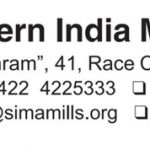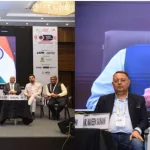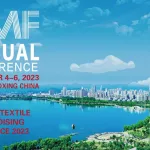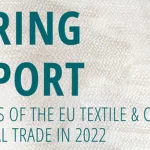
Weakening demand, inflation, and geopolitics – major causes for prolonged recession in the global textile value chain – ITMF Chief
The textile industry across the globe has been facing an unprecedented and prolonged slowdown from the second half of 2022 after witnessing a pent-up demand immediately after COVID lock down in almost all the textile manufacturing countries including East Asia, Southeast Asia, South Asia, Africa, Europe, North and Central America and South America. The retailers located in countries like the US and the EU, major export markets, have built high-cost inventory during 2021-22 and continue to struggle to clear the stocks due to weakening demand from retailers/brands that are still sitting on too much merchandise in their warehouses .Of course, inflation caused by disruption of the supply chains following the lockdowns caused by the COVID-pandemic as well as geopolitical issues, especially prolonged Ukraine-Russia war, also had a toll on demand.

Dr. K. V. Srinivasan
In a Press Release issued here at Coimbatore, India, Dr. K. V. Srinivasan, the newly elected President of the 119-year-old International Textile Manufacturers Federation (ITMF), Zurich, Switzerland, which is representing the entire textile value chain across the world has stated that the global textile industry has been facing unprecedented challenges. He has pointed out that ITMF’s latest Global Textile Industry Survey conducted in November 2023 and released in December 2023 revealed that weakening demand, inflation, geopolitical issues, raw material price volatility, steep increase in energy charges, shortage of labour and rising interest rates had been reported as the major root causes for the slowdown of the global textile industry. Weakening demand has been highlighted by 76% of survey respondents as the major cause for the poor performance of the industry.
Dr. Srinivasan has stated that around 44% of the respondents have reported some sort of cancellations of orders during the last four months, albeit only 5% reported major cancellations of 30% and more. Furthermore, he has stated that the survey also aimed at identifying the possibility of revival before May 2024. The survey revealed also that 44% of survey participants expect that in six months’ time the business situation will be more favourable, while 16% expect it to be less favourable. The balance of +28 percentage points (pp) in November is higher than the +20 pp in September.
ITMF President has stated that the textiles and clothing industry in India is the worst affected due to the added challenges on the raw material front (both cotton and manmade fibre) and steep increase in power cost in most of the textile manufacturing States. He has stated that urgent policy measure is required to ensure smooth supply of raw material at an internationally competitive rate by removing 11% import duty on cotton, addressing Quality Control Order (QCO) issues and price issues pertaining to PTA, MEG, Polyester & Viscose and ensure a level playing field. He has stated that Indian Government could have commenced the enforcement of Quality Control Orders from the finished goods as done for technical textiles rather than raw materials that had severe impact on the MMF value chain. He has opined that the Government could have avoided these two shortsighted policies when the industry has been facing an unforeseen crisis that had aggravated the global competitiveness and performance of the industry.
Dr. Srinivasan has stated that huge incentives offered for new investments by several State Governments in India have eroded the competitiveness of existing capacity making them unviable. He has added that the industry is already struggling with excess capacity due to mismatch in the supply and demand of quality raw materials in required quantum.
Dr. Srinivasan has pointed out that despite being the second largest manufacturer of raw material in the world, India could not gain any advantage while the countries like Bangladesh and Vietnam that do not have a raw material base have achieved exponential growth rate in exports, at the same time Indian exports are stagnated at USD 35 billion for more than a decade.
As a representative of the international Body, Dr. Srinivasan has suggested to the Central and State Governments in India to stall the shortsighted policies relating to raw materials, power, labour, and new investments until the industry revives. He has opined that one year moratorium for payment of loans, conversion of short-term loans into long term loans and extending additional working capital are some of the financial relief measures urgently required to prevent the textile units becoming NPAs and avoid closures throwing several lakhs of people out of jobs. Dr. Srinivasan has stated that appropriate policy measures with holistic approach is essential to enhance the global competitiveness and take advantage of China+1 policy.





